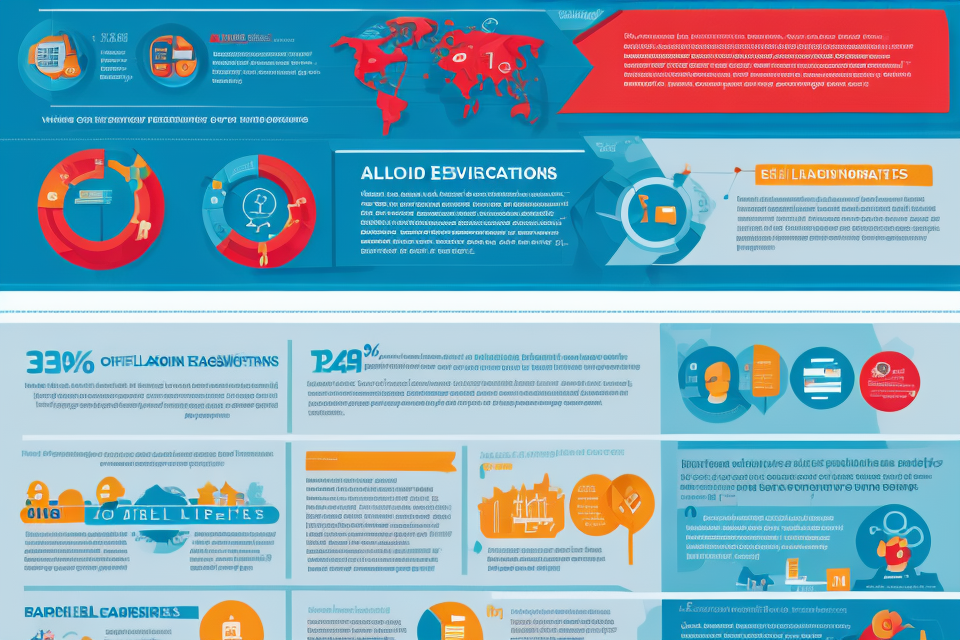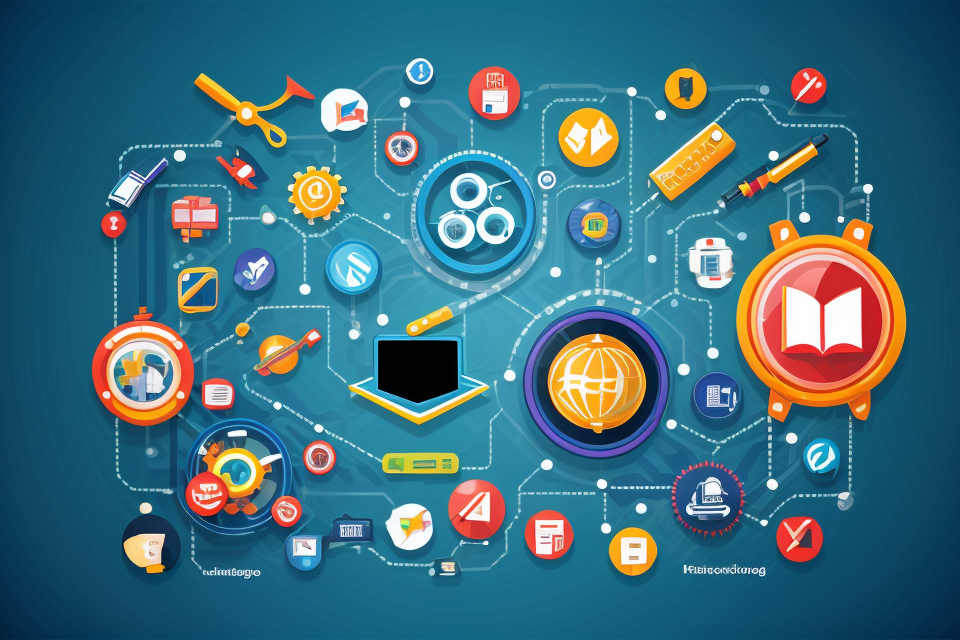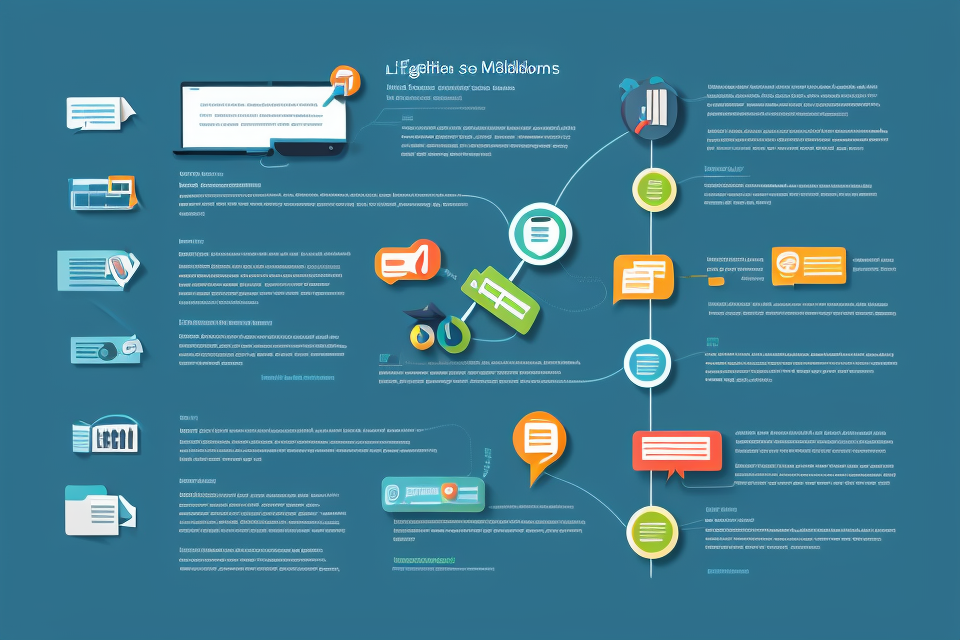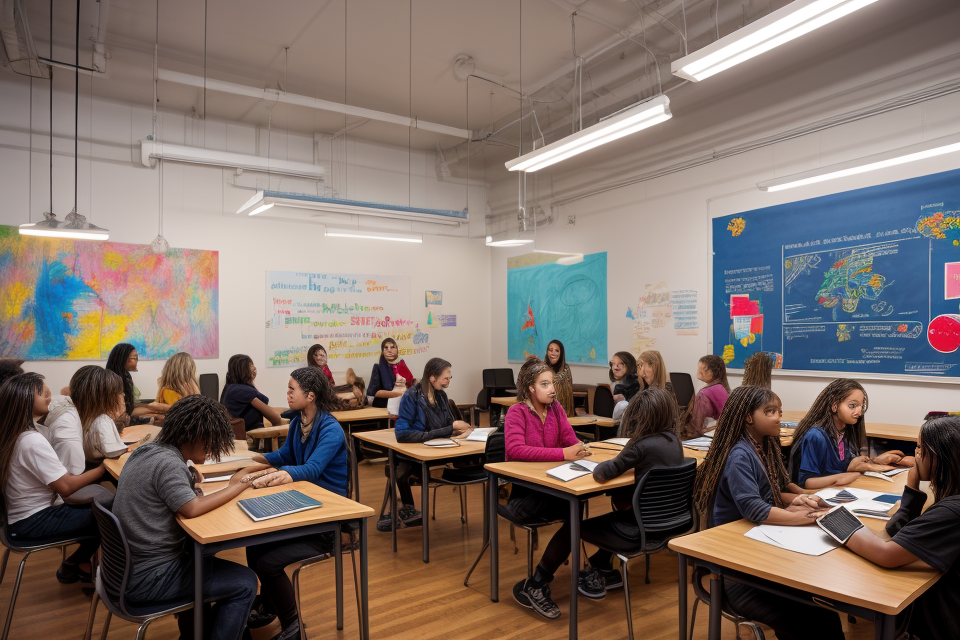
Artificial Intelligence (AI) has been a game-changer in almost every industry, and education is no exception. The question on everyone’s mind is whether AI will disrupt education or transform it for the better. This topic is a comprehensive examination of the impact of AI on education, exploring its potential to revolutionize the way we learn and teach. With AI becoming more advanced and integrated into our daily lives, it’s essential to understand its implications on the future of education. Will AI make teachers obsolete? Will it democratize access to education? Will it change the way we learn? These are some of the questions that this topic will address. So, buckle up and get ready to explore the exciting world of AI and education.
The Role of AI in Revolutionizing Learning
The Impact of AI on Traditional Education
Transforming the Teaching Process
- Personalized Learning: AI can analyze students’ learning patterns and adapt to their individual needs, allowing for more effective teaching methods.
- Adaptive Testing: AI can create adaptive tests that adjust in difficulty based on a student’s performance, providing a more accurate assessment of their knowledge.
- Virtual Learning Environments: AI can create virtual learning environments that simulate real-world situations, enhancing students’ understanding and retention of complex concepts.
Enhancing Student Engagement
- Gamification: AI can incorporate game-like elements into learning, making it more engaging and interactive for students.
- Social Learning: AI can facilitate social learning by connecting students with peers who have similar interests or abilities, fostering collaboration and motivation.
- Real-time Feedback: AI can provide real-time feedback to students as they work through problems, helping them to identify and correct mistakes quickly.
Improving Assessment Methods
- Automated Grading: AI can automate the grading process, reducing the workload for teachers and providing more accurate and consistent feedback for students.
- Predictive Analytics: AI can analyze student data to predict future performance and identify areas where students may need additional support.
- Formative Assessment: AI can provide formative assessment throughout the learning process, allowing teachers to adjust their instruction based on students’ needs and progress.
Integrating AI Technologies in the Classroom
AI technologies have the potential to transform education by providing personalized and adaptive learning experiences. Here are some examples of how AI can be integrated into the classroom:
- Adaptive learning systems: These systems use algorithms to analyze student data and adjust the pace and content of instruction to meet individual needs. Adaptive learning systems can identify gaps in student knowledge and provide targeted feedback to help students progress.
- Intelligent tutoring systems: These systems use AI to provide individualized instruction to students based on their performance. Intelligent tutoring systems can provide personalized feedback, suggest additional resources, and adapt to the student’s learning style.
- Natural language processing for educational applications: Natural language processing (NLP) is a branch of AI that focuses on the interaction between computers and human language. NLP can be used in education to improve language learning, analyze student writing, and provide feedback on communication skills. For example, NLP can be used to analyze student writing and provide feedback on grammar, vocabulary, and style.
Overall, the integration of AI technologies in the classroom has the potential to revolutionize education by providing personalized and adaptive learning experiences that can help students achieve their full potential.
AI-Driven Educational Innovations
Personalized Learning with AI
Tailoring Educational Experiences to Individual Learners
One of the most significant advantages of incorporating AI into education is the ability to tailor learning experiences to individual learners. By analyzing student data, such as performance, interests, and learning styles, AI can create customized educational paths that cater to each student’s unique needs. This approach allows educators to focus on the specific challenges and strengths of each student, ensuring that they receive the most effective instruction possible.
Identifying Knowledge Gaps and Recommending Appropriate Resources
Another benefit of personalized learning with AI is the ability to identify knowledge gaps and recommend appropriate resources for each student. By analyzing student performance data, AI can detect areas where a student may be struggling and suggest additional materials or exercises to help them catch up. This targeted approach to learning ensures that students receive the support they need to succeed, without wasting time on topics they have already mastered.
Enhancing Motivation and Engagement
Personalized learning with AI can also enhance motivation and engagement among students. By providing tailored educational experiences that address each student’s unique needs and interests, AI can help students feel more invested in their learning. Additionally, AI-powered tools can provide real-time feedback and encouragement, helping students stay motivated and engaged throughout their educational journey.
AI-Enhanced Assessment Techniques
Automated Grading Systems
Automated grading systems are a type of AI-enhanced assessment technique that have the potential to revolutionize the way education is conducted. These systems use machine learning algorithms to grade student work, freeing up teachers’ time and reducing the potential for human bias. Automated grading systems can be used to grade essays, multiple-choice questions, and even programming assignments. They can also provide immediate feedback to students, helping them to identify areas where they need to improve.
Detecting Plagiarism and Academic Dishonesty
Another application of AI-enhanced assessment techniques is in detecting plagiarism and academic dishonesty. AI algorithms can be trained to identify patterns in student work that suggest the use of external sources or the reproduction of material from other students. This can help educators to identify instances of academic dishonesty and take appropriate action. AI-based plagiarism detection tools can also help to promote academic integrity by encouraging students to properly cite their sources and engage in original thinking.
Predictive Analytics for Identifying At-Risk Students
AI-enhanced assessment techniques can also be used to identify students who are at risk of falling behind academically. Predictive analytics algorithms can analyze data on student performance, attendance, and engagement to identify patterns that may indicate a student is struggling. This can help educators to intervene early and provide targeted support to students who need it most. By identifying at-risk students, educators can work to ensure that all students have the opportunity to succeed and reach their full potential.
Ethical and Privacy Concerns
Balancing Benefits and Risks
Ensuring data privacy and security
As AI becomes increasingly integrated into education, concerns about data privacy and security have arisen. With the vast amounts of personal data being collected and stored by educational institutions, it is crucial to ensure that this information is protected from unauthorized access and misuse.
One solution to this problem is to implement robust data protection policies and regulations that govern the collection, storage, and use of student data. These policies should include measures such as encryption, access controls, and regular audits to ensure that data is being handled securely.
Preventing bias in AI algorithms
Another concern related to AI in education is the potential for bias in AI algorithms. These biases can be introduced through the data used to train the algorithms, leading to unfair outcomes for certain groups of students.
To address this issue, it is important to ensure that the data used to train AI algorithms is diverse and representative of the student population. Additionally, researchers and educators should regularly monitor the performance of AI algorithms to identify and address any biases that may arise.
Addressing the digital divide
The digital divide, or the unequal access to technology and the internet, is another ethical concern related to AI in education. As AI technologies become more prevalent in the classroom, it is important to ensure that all students have access to the necessary tools and resources to participate fully in the educational experience.
To address the digital divide, educational institutions should prioritize providing equal access to technology and the internet for all students. This may involve investing in infrastructure and devices, such as laptops and tablets, to ensure that all students have access to the necessary tools for learning.
Overall, balancing the benefits and risks of AI in education requires a thoughtful and intentional approach that prioritizes the safety and well-being of all students. By implementing policies and regulations that prioritize data privacy and security, prevent bias in AI algorithms, and address the digital divide, we can ensure that AI technologies are used in a way that benefits all students and promotes equity in education.
The Future of Educational Privacy
Compliance with data protection regulations
As AI becomes more integrated into education, it is crucial for educational institutions to comply with data protection regulations such as the General Data Protection Regulation (GDPR) and the Family Educational Rights and Privacy Act (FERPA). These regulations protect students’ personal data and ensure that it is collected, stored, and used ethically.
Educational institutions’ responsibilities
Educational institutions have a responsibility to ensure that AI systems used in education are transparent, fair, and do not discriminate against any particular group of students. This includes ensuring that AI systems are regularly audited and tested for bias, and that any personal data collected is used only for the purpose it was collected.
Student and parent rights
Students and parents have the right to know how their personal data is being collected, stored, and used by AI systems in education. They also have the right to request that their personal data be deleted if they no longer wish for it to be stored. Educational institutions must be transparent about their data collection practices and provide students and parents with clear and concise information about how their data is being used.
AI and the Future of Education
The Evolution of AI in Education
- Emerging trends and technologies
AI has already started to make its way into education, and it is expected to continue to evolve in the coming years. Some of the most promising areas of AI development in education include:
- Personalized learning systems that use AI to adapt to the individual needs and learning styles of students.
- Intelligent tutoring systems that provide personalized instruction and feedback to students in real-time.
-
Virtual assistants that help students with tasks such as scheduling, homework, and study tips.
-
Preparing for the workforce of the future
AI is already transforming many industries, and education must prepare students for this new reality. By incorporating AI into the curriculum, students can learn about the latest technologies and develop the skills they need to succeed in the workforce of the future.
- Continuous learning and skill development
AI can also help students develop the skills they need to thrive in a rapidly changing world. By providing personalized feedback and recommendations, AI can help students identify their strengths and weaknesses and develop a plan for continuous learning and skill development.
Overall, the evolution of AI in education has the potential to transform the way we learn and teach. By incorporating AI into the classroom, we can create more personalized, engaging, and effective learning experiences for students.
Collaboration Between Humans and AI
The integration of AI in education is not about replacing human educators but rather enhancing the educational experience by collaborating with them. This section will explore how AI can work alongside humans to improve teaching and learning outcomes.
AI as a complementary tool for educators
AI can serve as a powerful tool for educators, providing them with valuable insights into their students’ learning patterns and progress. With the help of AI, teachers can identify areas where students are struggling and tailor their teaching methods to meet individual needs. This personalized approach to education can significantly improve learning outcomes and help students reach their full potential.
Fostering critical thinking and creativity
AI can also be used to foster critical thinking and creativity in students. By working with AI, students can learn to think outside the box and develop problem-solving skills that will serve them well in their future careers. For example, AI can be used to create personalized learning experiences that challenge students to think critically and creatively, helping them develop the skills they need to succeed in today’s rapidly changing world.
Enhancing human-AI interaction for optimal learning outcomes
One of the key benefits of AI in education is its ability to enhance human-AI interaction for optimal learning outcomes. By working with AI, educators can provide students with a more engaging and interactive learning experience. For example, AI can be used to create chatbots that answer student questions, provide feedback on assignments, and offer personalized recommendations for further study. This collaboration between humans and AI can significantly improve the overall quality of education and help students achieve their academic goals.
FAQs
1. What is AI and how does it relate to education?
AI, or Artificial Intelligence, refers to the simulation of human intelligence in machines that are programmed to think and learn. In the context of education, AI can be used to create intelligent systems that can understand, learn, and apply knowledge in various educational domains. These systems can help automate administrative tasks, provide personalized learning experiences, and assist in research and development.
2. Is AI already being used in education?
Yes, AI is already being used in various aspects of education. For example, some schools and universities use AI-powered systems to grade essays and other assignments, which can save time and provide more consistent feedback. AI-powered chatbots are also being used to provide students with instant answers to their questions and help with basic inquiries. In addition, AI is being used to personalize learning experiences by adapting to the individual needs and learning styles of students.
3. How might AI change the way we teach and learn?
AI has the potential to revolutionize the way we teach and learn. It can help create more personalized and engaging learning experiences by adapting to the individual needs and learning styles of students. AI can also help teachers by automating administrative tasks, such as grading and providing feedback, which can free up more time for them to focus on teaching and mentoring students. In addition, AI can assist in research and development by analyzing large amounts of data and identifying patterns and trends.
4. What are some potential drawbacks of using AI in education?
One potential drawback of using AI in education is that it may replace human teachers and staff, leading to job losses. There is also a concern that AI may not be able to fully replicate the emotional and social support that human teachers can provide. Additionally, there is a risk that AI systems may perpetuate biases and inaccuracies if they are not properly designed and trained. Finally, there is a concern that AI may create a two-tiered education system, where those who can afford AI-powered education have an advantage over those who cannot.
5. What steps can be taken to ensure that AI is used ethically in education?
To ensure that AI is used ethically in education, it is important to prioritize transparency and accountability. This means that the development and use of AI systems should be open to scrutiny and evaluation by educators, students, and other stakeholders. It is also important to ensure that AI systems are designed and trained to be fair and unbiased, and that they are regularly audited to ensure that they are functioning as intended. Finally, it is important to prioritize the needs and perspectives of students and teachers in the development and use of AI systems, to ensure that they are designed to enhance, rather than replace, human interaction and teaching.


